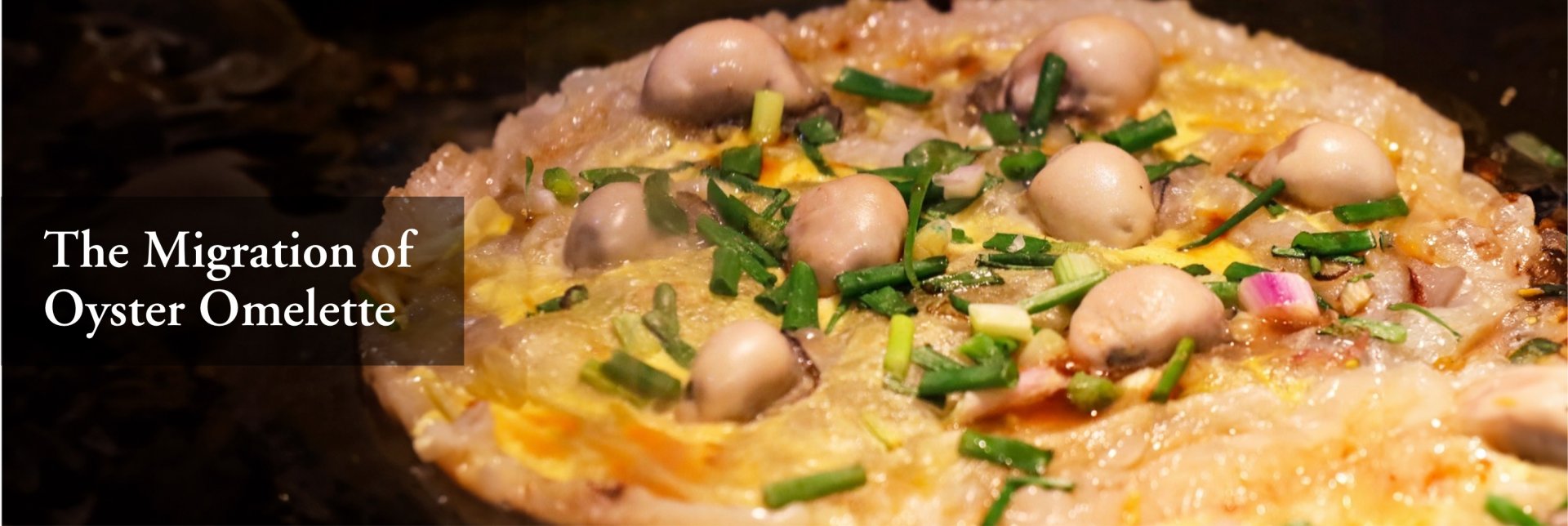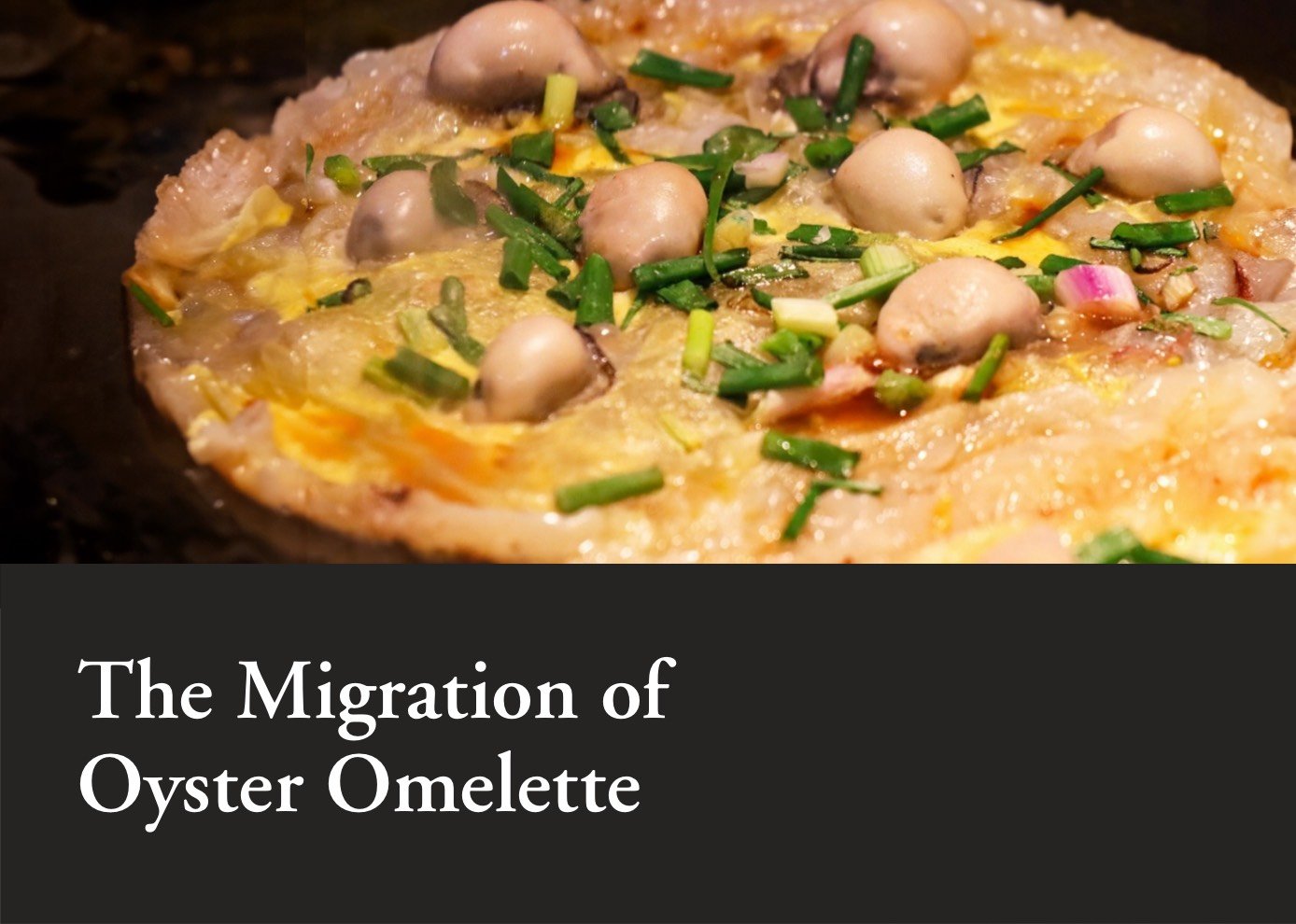The Migration of Oyster Omelette
People migrate, and so does food. Oyster omelette (蚵仔煎) is called slightly differently in different regions. Originating in Fujian, the dish has integrated into Chinese society and developed local characteristics in different regions through immigration.
Let's take the migration route of Quanzhou-Kinmen-Xiamen-Malaysia as an example. The coastal areas of Fujian are rich in seafood, and oysters often are used in local cooking. Oyster omelette offer a crispy texture and is full of oysters in every bite. It tastes similar in Kinmen, opposite Xiamen. In the early years, the living environment of Kinmen was very tough. Poor soil, lousy climate, and piracy made many people from Kinmen go South to make a living. Today, we can still find many Kinmen people in Malaysia, Singapore, Brunei, and other Southeast Asian countries.

In Pulau Ketam, off the port of Klang, Malaysia, you can find many Chinese who moved from Kinmen many years ago. Therefore, you can also see on the Chinese signboards of restaurants that they serve oyster omelettes. Like in Taiwan, many people are afraid to eat oyster omelettes so the chefs would use shrimp or just egg instead. A special, localised version of the dish is called “lala chien”, where “lala” means baby-size oysters.

The Teochew-Thailand migration tells another story. The Teochew people are the majority of overseas Chinese. In the 18th century, during the Ayutthaya Dynasty of Thailand, Siam was made more prosperous because of its rice trade with the Qing Dynasty. The ships transporting rice were the unique “red head ships”, and many sailors were from the Chaoshan region. Many Chinese in Thailand today come from Teochew. Even the founding emperor of Thunburi Dynasty in Thai history, Zheng Xin, was of Teochew descent. Therefore, oyster omelette has also become a snack in Thailand, crispy and served with Thai sweet chili sauce. In Malaysia, where there are many Teochew people, the Teochew version of oyster omelette is called “蠔烙” (fried omelette). Its appearance is quite different from those we mentioned above. Besides the essential crispy texture, its appearance is maintained relatively neat in the cooking process. It can be made square or round in shape and served with pepper and fish sauce. I took a while to convince myself that it was an oyster omelette!

Now that you have finished reading and learned how migration has created diversified oyster omelettes, do you find it even more mouthwatering?
All articles/videos are prohibited from reproducing without the permission of the copyright holder.




Welcome to leave a message:
Please Sign In/Sign Up as a member and leave a message